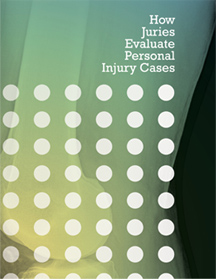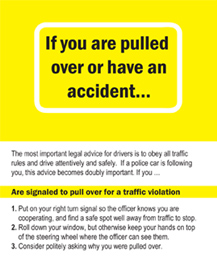Which cases are selected for surveillance
How do adjusters determine when a claim — or a claimant — may be the lucky target of surveillance, a.k.a., a sub rosa investigation?
Insurance claim personnel typically consider the “red flags” that may indicate the need to put an injury claimant under surveillance. These are offered in a tongue-in-cheek manner, but any one of them is sufficient to raise a red flag in the mind of the insurance adjuster. When this occurs, the odds the claim will be subject to surveillance rise significantly.
- Nike test — The claimant comes in to pick up a compensation check wearing a Nike jogging suit. (Adidas or some other sporting line of apparel will qualify as well.) Adjusters figure that, if you are disabled, what are you doing wearing workout gear?
Recidivist test — The claimant used the same doctor and/or injury attorney in past injury claims. This leads adjusters to wonder if the system is being “gamed” or if the claimant, lawyer, and doctor are “in cahoots” regarding personal injury settlements. Adjusters are on the lookout for coincidental tandems, i.e. where the same treating physician and attorney appear in personal injury cases again and again.
Professional claimant — An Index Bureau printout reveals the claimant has a brisk claims history. (Most insurers and large claim administrators subscribe to a service called the Central Index Bureau, a database that tracks information on bodily injury claimants.). An Index Bureau “hit” may show the name of the attorney, the doctor and the type of injury. It also can indicate the type of prior claim: workers’ compensation, auto bodily injury, slip and fall, etc. Adjusters eagerly await the Index Bureau response on each filing. In well-run claim offices, adjusters are encouraged – if not required – to file an Index Bureau sheet on every bodily injury claim.
Recurring injury – The claimant has a long history of the same types of injury. This makes claims adjusters suspicious, leading them to wonder if the injury is legitimate or if a claimant is “milking” the injury for secondary gain factors.
Too convenient coincidence test — Claimant alleges “recurrence” of back/neck problems just before the onset of cold weather, a union strike or workforce layoff. Some injuries just do not seem to flare up in mild or nice weather.
Nanosecond lawyer letter test — The personal injury attorney’s letter of representation is dated same day as on-the-job injury. Extra points if letter predates the accident date. Claims adjusters are very wary of individuals who seem to be – in insurance parlance – “claims conscious.” If they are very quick about getting counsel, adjusters’ fraud detectors often are activated.
Union demand test — Immediate contact from the union representative demanding to know whether or not the claim has been accepted smacks of premeditation, or at least, overanxious tendencies by the claimant.
Greenback poultice test — The claimant limps in to pick-up a compensation check but walks normally across the parking lot. Extra points if he hurdles the door into his convertible sports car.
M.I.A. — The claimant is never home when the adjuster phones during the day, especially when the claimant is supposed to be laid up with some disability. “If he’s disabled, why is he never home during the day?” adjusters wonder.
Couch potato — The claimant is home when the adjuster phones, but the claimant cannot take the call because he is watching Oprah or Jerry Springer.
Exaggeration test — The claimant’s complaints and disability seem out of proportion to the accident and prior injuries of this type.
Dr. Whiplash — The claimant’s attending physician is known as extremely pro-plaintiff and coincidentally surfaces as the treating physician for claimants who just happen to be represented by a certain personal-injury law firm.
Big case — The case involves a massive amount of money due to loss of wages/wage-earning capacity claim.
Deep-throat — The adjuster receives an anonymous or even not-so-anonymous tip to the effect that a “disabled” claimant is working at another job…or on his golf swing. Coworkers, supervisors or that ex-wife who is looking for late alimony payments are often fruitful sources for such leads.
Gut-feeling test — The claim adjuster’s “sixth sense” that he or she has developed after years of handling claims indicates that there is something rotten in the state of Denmark. Alternatively, this is known as the “smell test” or “stink test.”
Saccharine test — Some might think that an aggressive or hostile claimant is a candidate for surveillance. While true, the overly nice claimant also can be a candidate.



